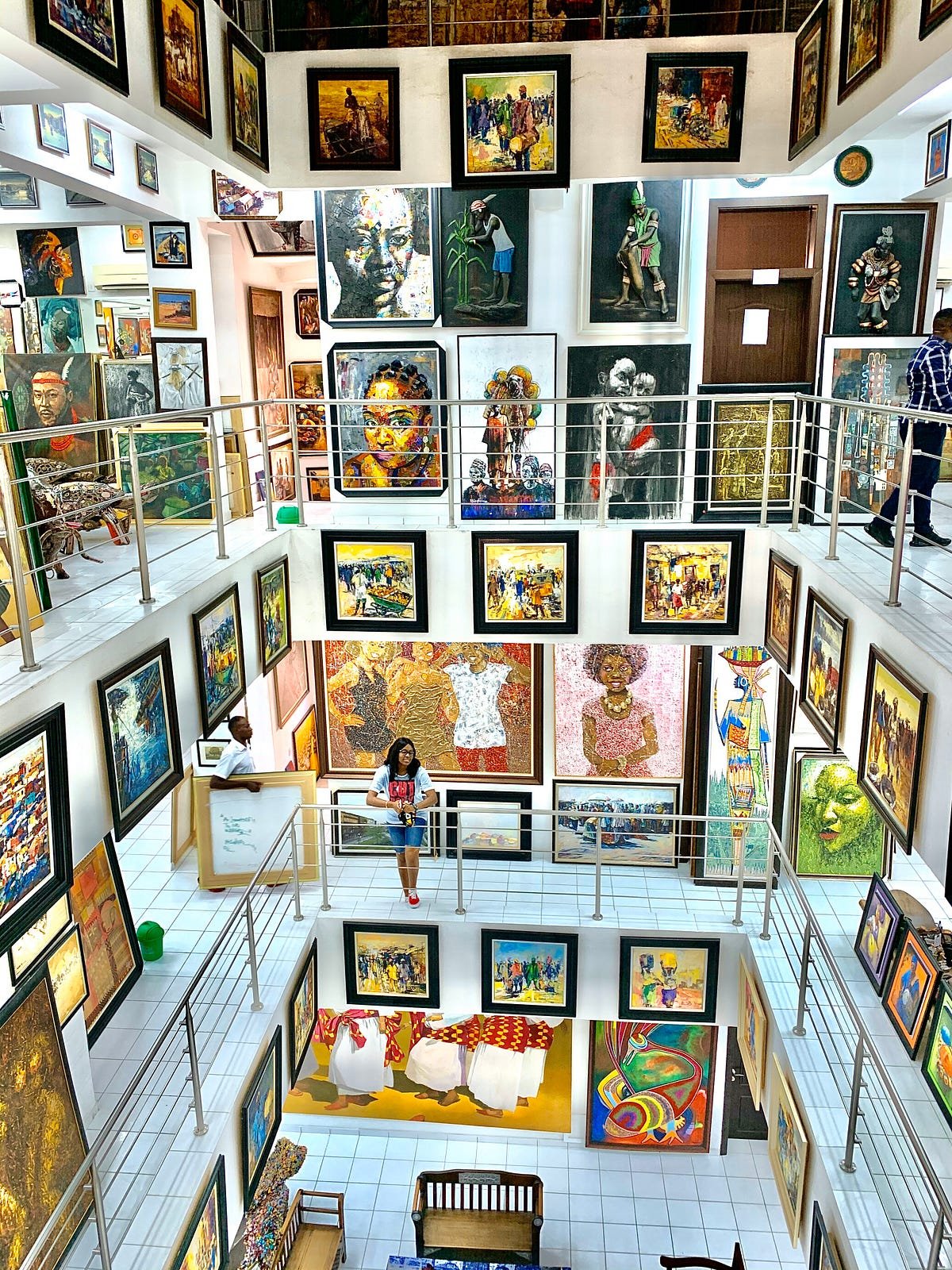The Role of Art Galleries and Spaces in West Africa
The rhythmic beats of African drums, the mesmerizing dance forms, and the rich tapestry of colours that adorn fabrics all culminate to create the essence of West African art. Beyond the surface-level expressions, the region boasts a thriving art scene, fostered by a network of dynamic art galleries and spaces. These creative hubs play a pivotal role in shaping cultural identity, fostering dialogue, and propelling both local and global artistic narratives. In this article, we embark on a journey to unravel the multifaceted role of art galleries and spaces in West Africa, delving into their historical significance, contemporary impact, and the vibrant stories they tell.
Historical Context: Art as a Cultural Keystone
To comprehend the contemporary significance of West African art galleries and spaces, it is crucial to delve into the historical roots that have nourished this artistic soil. West Africa's history is adorned with intricate art forms that reflect its diverse cultures, traditions, and spiritual beliefs. The likes of the Benin bronzes, Ife terracottas, and Dogon sculptures have transcended time, carrying with them stories of ancient civilizations that thrived through artistic expression.
Art galleries and spaces in West Africa stand as modern custodians of this rich heritage, curating exhibitions that echo the echoes of the past while offering a platform for emerging artists to interpret and reinterpret their legacy. These spaces serve as bridges between history and modernity, fusing the vibrancy of contemporary creativity with the depth of ancestral knowledge.
Cultural Identity and Connection
In the ever-evolving world, the role of art galleries and spaces has become intertwined with the construction and preservation of cultural identity. West African art galleries are not just physical spaces; they are sanctuaries where cultural roots are reaffirmed and celebrated. Artists working within this context find themselves engaged in a delicate dance between tradition and innovation. By integrating time-honoured techniques with contemporary mediums, these creators forge a new path for West African art that is both rooted and forward-looking.
Art galleries and spaces act as communal centres where local communities gather to celebrate their shared heritage. These spaces host workshops, lectures, and interactive sessions, serving as educational platforms where young and old visitors can learn about the nuances of art-making processes, the stories behind each piece, and the cultural contexts that shape them. This exchange nurtures a deeper appreciation for the arts and contributes to the overall cultural enrichment of the region.
Fostering Dialogue and Social Discourse
In the heart of bustling cities like Lagos, Accra, and Dakar, art galleries transcend their role as mere display spaces to become platforms for dialogue and social discourse. West African societies grapple with a multitude of issues ranging from politics and gender dynamics to environmental concerns. Art, as a form of expression, offers a unique lens through which these topics can be examined.
Contemporary artists in West Africa use galleries as a canvas to engage with and challenge societal norms. Through their creations, they provoke thought, encourage discussion, and advocate for change. Whether it's a thought-provoking sculpture that critiques consumerism or a vibrant painting that explores gender equality, art galleries provide a safe haven for artists to voice their opinions and catalyze conversations that resonate far beyond gallery walls.
Gateway to Global Conversations
While art galleries in West Africa play a pivotal role in local narratives, they also act as bridges connecting the region to the global art scene. As the world becomes more interconnected, these galleries serve as gateways for international exposure, offering West African artists the opportunity to showcase their talent on a global stage.
Art fairs, biennales, and international exhibitions have become platforms for West African artists to engage with a broader audience, fostering cross-cultural exchanges and collaborations. In turn, this exposure enriches the local art scene, infusing it with new perspectives, techniques, and ideas. The global art community also benefits, gaining insights into the intricate layers of West African cultures and experiences through the eyes of its artists.
Preservation of Traditional Crafts
Beyond paintings and sculptures, West African art galleries play a vital role in preserving traditional crafts that are at risk of fading away in the face of modernization. Textiles, beadwork, pottery, and intricate wood carvings are just a few examples of the region's unparalleled craftsmanship.
These galleries become spaces of reverence for these crafts, celebrating the skill and heritage of artisans who have mastered techniques passed down through generations. By offering these artisans a platform to showcase their work, galleries ensure the continuity of these crafts while also contributing to the economic empowerment of local communities.
Art Tourism and Economic Growth
Art tourism has emerged as a significant driver of economic growth in West Africa. The cultural richness of the region draws inquisitive minds from around the world, eager to immerse themselves in the vibrant tapestry of West African art. Art galleries and spaces, with their curated exhibitions and cultural events, serve as magnets for these tourists, fostering a symbiotic relationship between art and local economies.
The economic impact is not limited to the galleries themselves. As the art scene flourishes, surrounding industries such as hospitality, transportation, and local businesses thrive, creating a ripple effect that fuels sustainable growth.
The art galleries and spaces in West Africa are more than just venues that showcase beautiful creations; they are the beating heart of a dynamic cultural ecosystem. These spaces honour the past, empower the present, and pave the way for a promising future. They are places of connection, of dialogue, and of transformation. Through their doors flow the stories, struggles, and triumphs of a region, encapsulating the essence of West African identity. As we continue to navigate the intricacies of an ever-changing world, these galleries stand as beacons, reminding us of the power of art to shape narratives, foster unity, and inspire greatness.

